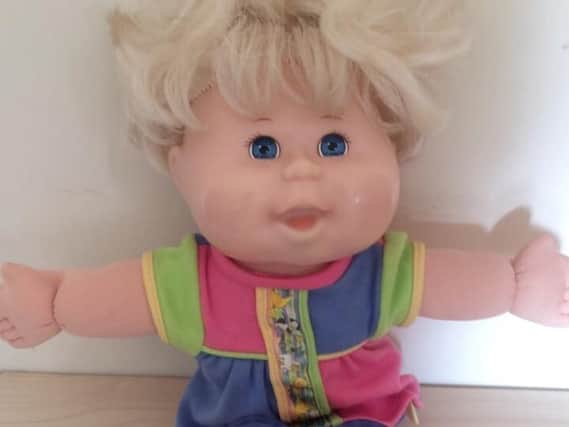Cabbage Patch Kids are still popular among collectors


As the new school year looms, it reminds me of my daughter, who used to say “My dolls are so lucky- they don’t have to go to school!”
Thinking back, who remembers the ‘Cabbage Patch Kids’ craze that swept the world in the 80s? Love or loathe them, nothing has quite matched the mania for these ‘distinctive’ dolls since!
Advertisement
Hide AdAdvertisement
Hide AdShort-lived, high-volume fads like Cabbage Patch craze pose an interesting dilemma for collectors. Prices reach unsustainably inflated levels at the height of the hysteria, then crash very quickly. Is it worth betting that ‘retro’ trends and nostalgia will make future interest- and prices- rise again?
21 year-old American art student Xavier Roberts began handmaking ‘Little People’ in 1976, using inherited 19th century German quilting skills. As the dolls’ popularity surged, he sold mass-production to the Coleco Toy Company in 1982. Each, now called Cabbage Patch Kids, came with its own unique name, birth certificate, and adoption papers.
Within five years 65 million dolls had been sold and the world had gone Cabbage Patch crazy. However, by 1994, the craze had completely burned out, leaving Coleco bankrupt.
With over 80 million produced, these dolls are by no means rare, most (now a bit worse for wear) fetching £10-£20. However, certain mint-in-box rare varieties like the ‘Baldies’, red-haired ‘Fuzzies’ and some of the very early Coleco dolls can be worth £100 or more.
Advertisement
Hide AdAdvertisement
Hide AdThe jackpot are Xavier’s pre-Cabbage Patch dolls, which can fetch closer to £1,000 on the American market, where there is still huge sentimentality for these ‘little people’.
While an all-American trend, with millions sold in the UK, I bet there’s a discarded Cabbage Patch Doll in a Lancaster attic or two. To check the provenance, inspect its bottom! There you’ll find Xavier’s signature and usually a date. A black signature (no date) indicates an early, more valuable doll, with ink colours then changing every year, including green, blue, red, purple and aqua.
This hopeful-looking Cabbage Patch doll has clearly been loved, but still has plenty of hugs left in him. With relatively unusual ‘mismatched’ eye colours, he’s waiting patiently to be adopted in the centre, priced £15.
A great illustration of ‘boom and bust’ toy crazes, most Cabbage Patch dolls might now be pushing up the daisies, but know your onions, and you could have a bountiful harvest.